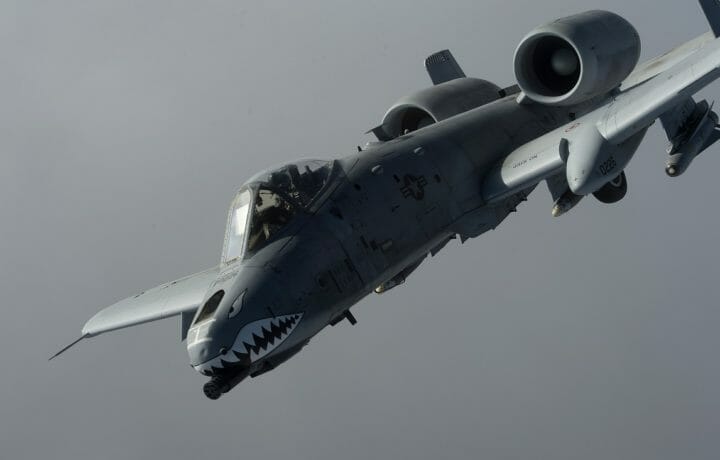Fresh off his trip to meet with NATO leaders in The Hague, President Donald Trump has called for a pay raise for servicemembers, while pushing for additional missiles and unmanned aerial systems (UAS) in next year’s defense budget. Trump, who attended the NATO summit, also sought to increase the defense spending of alliance members to 5% of each nation’s gross domestic product (GDP) by 2035.
Many of the NATO members have steadily increased defense spending since Russia launched its unprovoked invasion of Ukraine more than three years ago, and only Spain, which is already well below the current 2% target for defense spending, remained uncommitted to reaching the 5% goal.
The agreement by NATO members to increase defense spending was seen as a victory for the administration, which has accused America’s allies of not paying their fair share of the costs.
“It’s a monumental win for the United States because we were carrying much more than our fair share. It was quite unfair actually. But this is a big win for Europe and for actually Western civilization,” Trump told reporters.
Breaking It Down – What’s In, What’s Out?
Despite previous reports that the fiscal year 2026 (FY26) budget request could reach $1 billion, it remained flat at $892.6 billion from the previous year. It called for fewer aircraft and warships.
The proposed budget includes a 3.8% pay raise for U.S. military personnel, which would be offset by retiring older military hardware. Additionally, the United States Navy would reduce its workforce by 7,286 civilian employees.
The Navy has increased its recruiting goals, with the FY26 budget calling for 283,680 sailors, up from 278,382 in the previous fiscal year.
“As Navy responds to growing threats around the world, including targeted strikes in the Red Sea and grey zone activities threatening freedom of navigation in the Pacific, the demand for top talent is rising. Over the past year, recruiting has rebounded with American youth increasingly responding to the call to service,” the Navy’s budget book stated.
The U.S. Navy announced earlier this month that it had already met its fiscal year 2025 (FY25) recruiting goal, marking the second consecutive year. For both FY25 and FY24, the recruiting goal had been set at 40,600. The United States Marine Corps has gradually decreased its active-duty strength and is expected to have 172,300 personnel at the end of FY26, compared to 172,606 in FY25 and 173,096 in FY24.
The budget also requested just three vessels, down from the six boats in the FY25 budget. However, the procurement of a Virginia-class submarine, to be produced by General Dynamics and Huntington Ingalls Industries (HII), along with 15 other ships, may be included in a separate appropriation bill, according to the Navy.
Missiles Not F-35s
The FY26 bill also calls for additional Joint Air-to-Surface Standoff Missiles – Extended Range (JASSM-ER) missiles and Long-Range Anti-Ship Missiles (LRASM), which Lockheed Martin produces. The U.S. Navy has used vast numbers of the missiles in its efforts to protect commercial shipping in the Red Sea and its standoff with the Iranian-backed Houthi militants.
Washington reached a ceasefire with the group in May, after the U.S. carried out a bombing campaign on the Yemeni-based group. Still, analysts have warned that the U.S. stockpiles of the weapons have been seriously depleted. Anti-missile interceptors are seen as a crucial part of the U.S. Navy’s arsenal of ordnance should the United States end up in a war with China in the Indo-Pacific region.
By contrast, the budget request called for fewer Precision Strike Missiles, the replacement for the Army Tactical Missiles (ATACM) that had been supplied to Ukraine.
Orders for the F-35 Lightning II fifth-generation fighters could also be scaled back. The U.S. Air Force, U.S. Navy, and U.S. Marine Corps will receive a total of 47 of the stealth multirole aircraft, down from the 68 F-35s that the services received in FY25. Lawmakers may push back on these numbers, as the House’s draft bill calls for 69 F-35s, one more than in the final budget request from the Biden Administration.
The budget also calls for an increase in spending on small drones, while also recommending the retirement of the entire fleet of the Air Force’s 162 A-10 Thunderbolt II (Warthog) close air support (CAS) aircraft.
Not included in the defense budget request was funding for the Golden Dome missile defense system, which was requested separately.

